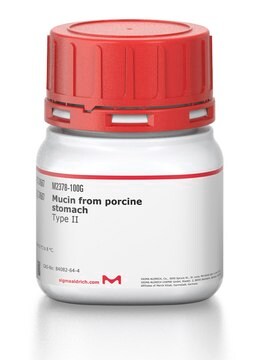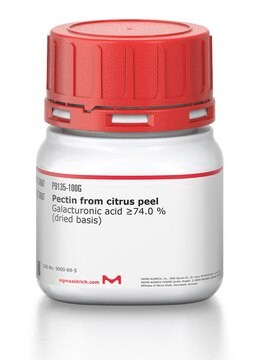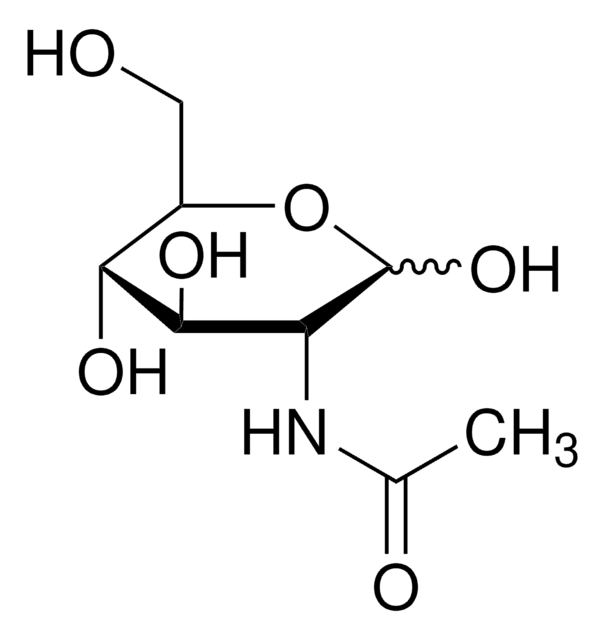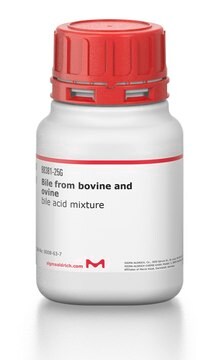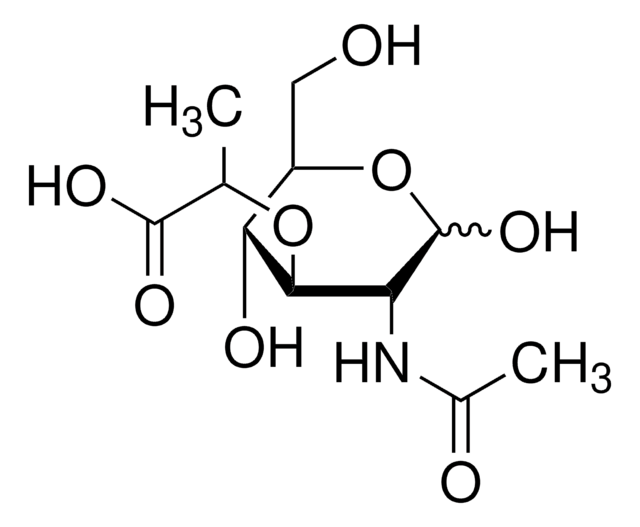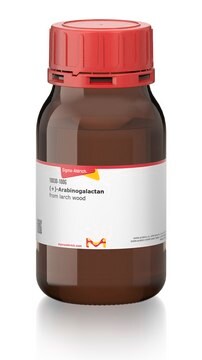M1778
Mucine from porcine stomach
Type III, bound sialic acid 0.5-1.5 %, partially purified powder
Synonyme(s) :
MUC
About This Item
Produits recommandés
Source biologique
Porcine stomach
Type
Type III
Forme
partially purified powder
Composition
bound sialic acid, 0.5-1.5%
Technique(s)
microbiological culture: suitable
Solubilité
NaOH: soluble 20 mg/mL
Température de stockage
2-8°C
Vous recherchez des produits similaires ? Visite Guide de comparaison des produits
Catégories apparentées
Description générale
Application
Actions biochimiques/physiologiques
Notes préparatoires
Classe de danger pour l'eau (WGK)
WGK 3
Point d'éclair (°F)
Not applicable
Point d'éclair (°C)
Not applicable
Équipement de protection individuelle
Eyeshields, Gloves, type N95 (US)
Faites votre choix parmi les versions les plus récentes :
Déjà en possession de ce produit ?
Retrouvez la documentation relative aux produits que vous avez récemment achetés dans la Bibliothèque de documents.
Les clients ont également consulté
Articles
Review article and products for sialic acid synthesis and signaling.
Notre équipe de scientifiques dispose d'une expérience dans tous les secteurs de la recherche, notamment en sciences de la vie, science des matériaux, synthèse chimique, chromatographie, analyse et dans de nombreux autres domaines..
Contacter notre Service technique